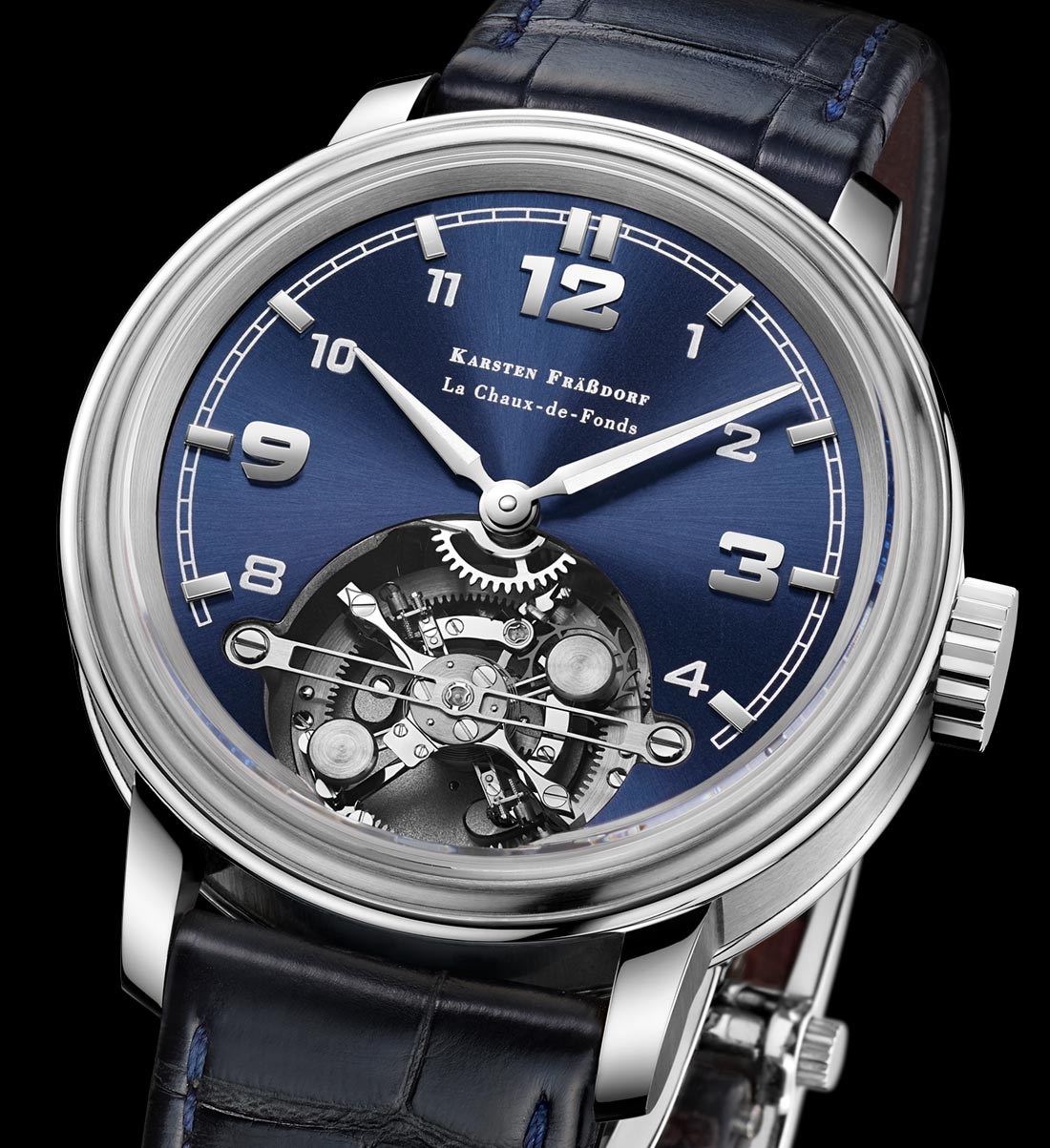
I’m glad somewhere like Switzerland exists where, alongside watch industry giants, there is a place for obscure brands pursuing their personal visions, making largely handmade watches in small batches. In addition to the celebrated few “independents” that many are familiar with, it is a treat to learn about new or previously overlooked brands or individuals like that. Karsten Fraessdorf is one such watchmaker, and the Karsten Fraessdorf Spirograph Tourbillon is the first watch to bear his name on the dial. The brand’s straightforward, technical approach and total lack of gimmickry is refreshing – unless you consider the tourbillon itself a gimmick. This is not a watch meant for the masses either in terms of appeal or production volume.
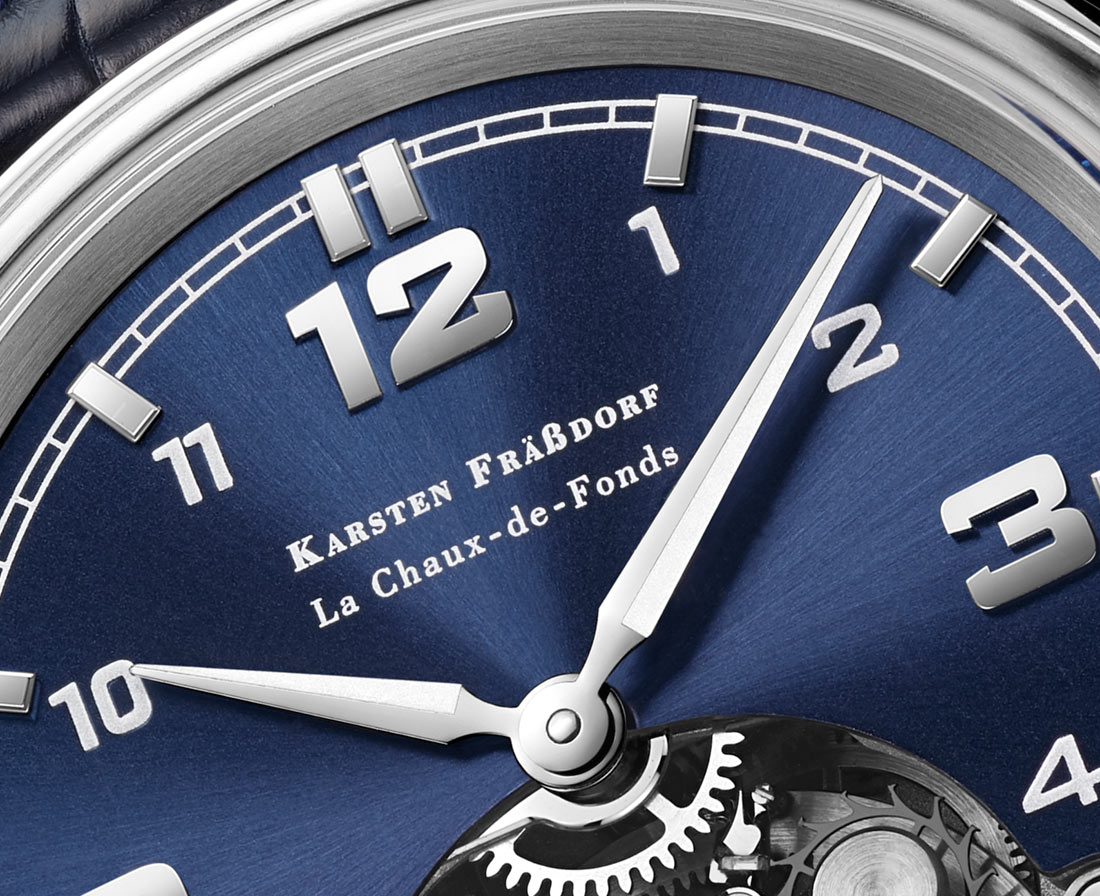
Karsten Fraessdorf is a German watchmaker (his press release has kindly anglicized Fräßdorf for our benefit) and veteran of the industry and has worked with the likes of Laurent Ferrier. Now setup in La Chaux-de-Fonds, I very much appreciate that his marketing materials’ only mention of “heritage” refers to traditional watchmaking techniques. Further, there are no alternative ways of displaying the time, wild avant-garde designs, or mind-bending horological acrobatics here. Just a watch that is apparently meant to be actually worn, even if it is largely made by hand, features a giant tourbillon, and costs upward of €80K.
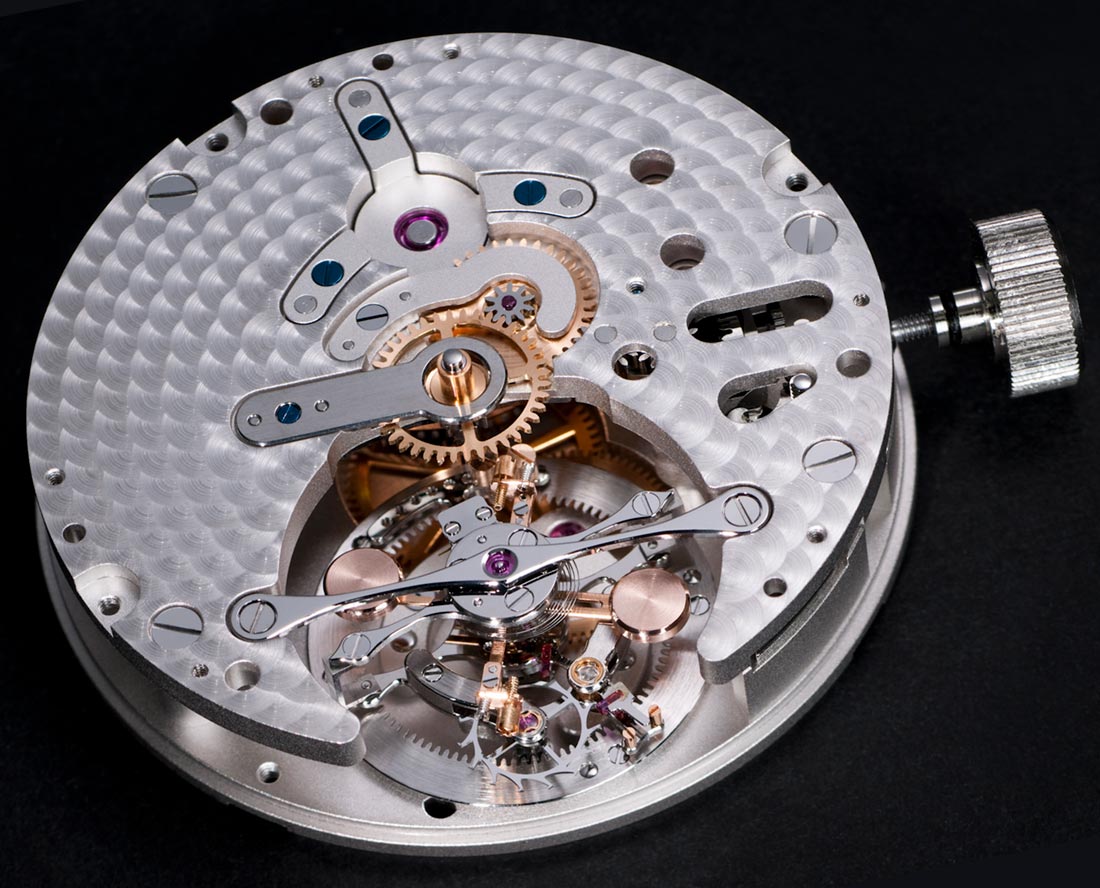
Karsten Fraessdorf’s first eponymous creation features an “oversized” tourbillon and is limited to 25 pieces. Its 45mm-wide, 13.4mm-thick steel case and simple dial design speak to a down-to-earth German sensibility. The dial uses a white gold baseplate and is available in different finishes with applied numerals and indices, printed numerals, and faceted hands. It’s reminiscent to me of some military or field watch designs, which is interesting paired with the tourbillon, but the dial is surely of secondary importance after the main attraction.
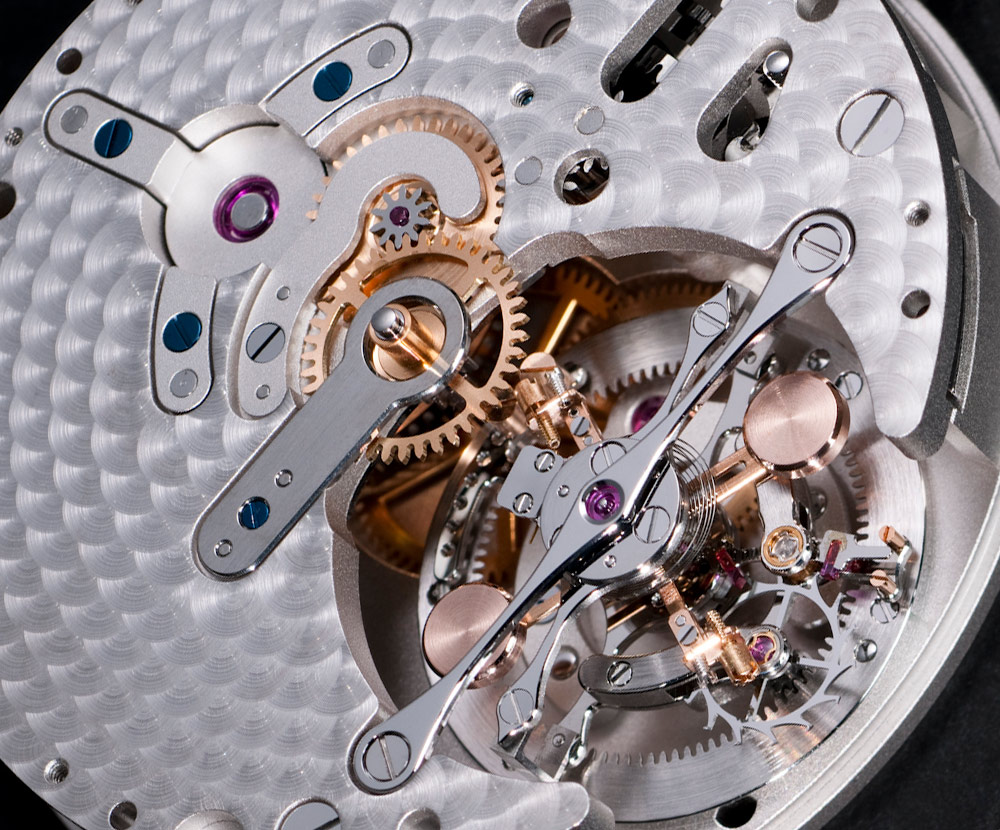
Tourbillons are typically known to be intricate, delicate mechanisms that often seem designed and destined for a collector’s safe more than the hazards of a person’s wrist. The Karsten Fraessdorf Spirograph Tourbillon, however, is tested to 5,000g of shock resistance – watch brands often test this kind of thing by setting up a watch and smacking it with a plastic hammer mounted on a pendulum. Shock resistance to 5,000g is not totally unheard of, but it is similar to many non-tourbillon-equipped watches that emphasize shock resistance such as those from Ball Watch Company, and equal to Richard Mille tourbillon watches worn by tennis champion Rafael Nadal while actually playing professional tournaments – though more recent Richard Mille Nadal watches are up to 10,000g.
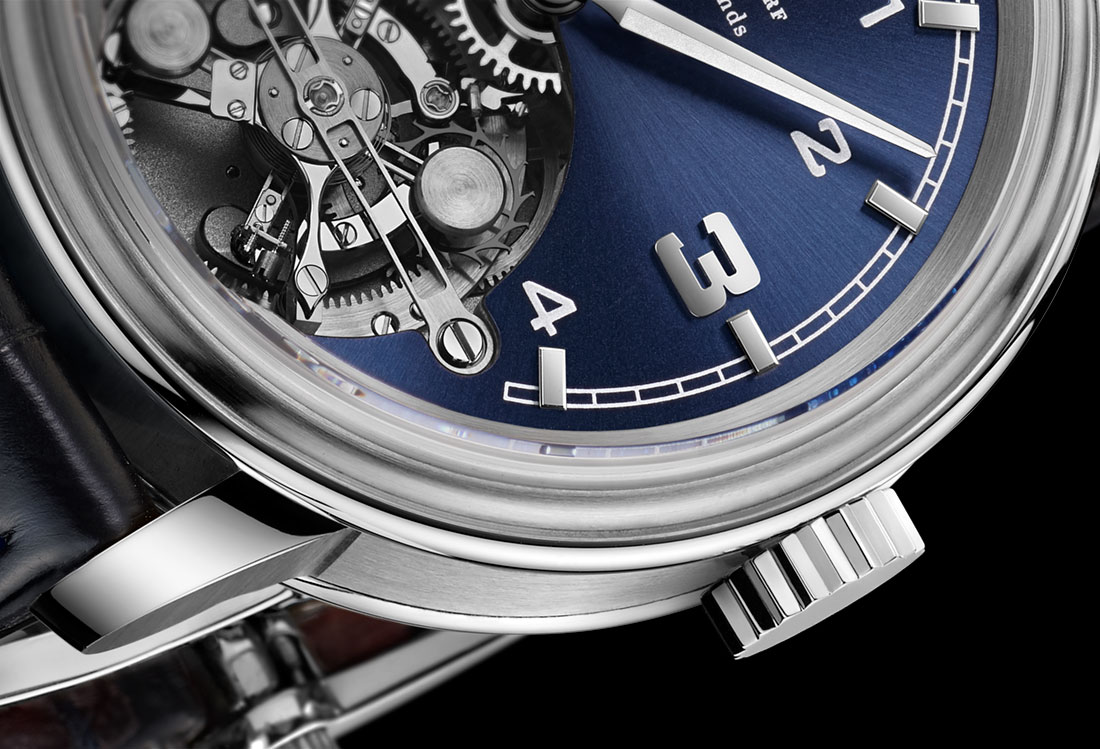
In any case, the point is that this Karsten Fraessdorf movement and watch itself are made to at least withstand daily use and abuse, and that is not so common for this kind of watch (i.e., with tourbillon). The crown and winding mechanism, we are told, are also designed to hold up to impacts. For me, such little touches and features that you have to learn about to appreciate, and that show dedication to making something right, are usually more compelling than something flashy. If Karsten Fraessdorf is emphasizing durability and wearability, however, he could have perhaps gone a little bit further than the 30m of water resistance of the Spirograph Tourbillon.
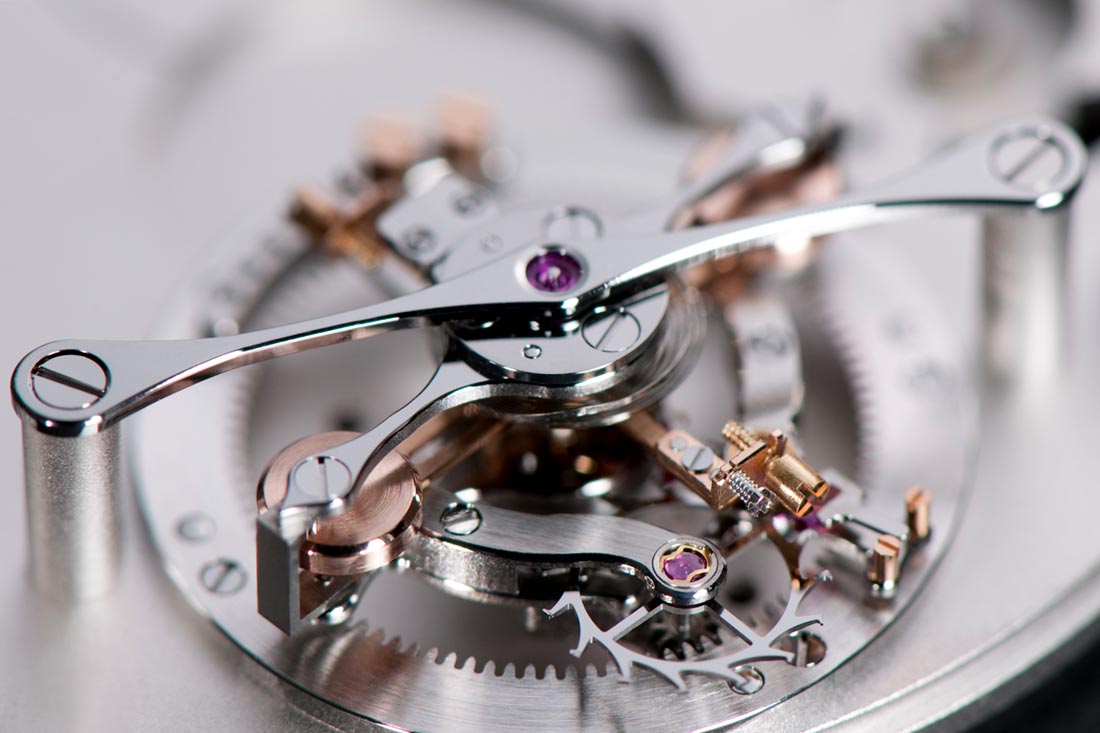
Now we’ll get into some of the geeky details that are meant to appeal to the target audience for such a watch as the Karsten Fraessdorf Spirograph Tourbillon. Most are related to the tourbillon itself, but the brand’s materials indicate that the watches are “handmade” and hand-finished by Karsten Fraessdorf, the man himself. It is necessary to put that word in quotes because there are too many examples of brands out there that abuse its potential ambiguity, and Karsten Fraessdorf has not unequivocally stated the extent to which each component is produced in-house, though they do indicate that all components are hand-finished by the watchmaker personally. For people who are potential clients and want to know specifically, small operations such as Mr. Fraessdorf’s will surely be happy to answer questions as well as offer some custom options like guilloche dials or what have you.
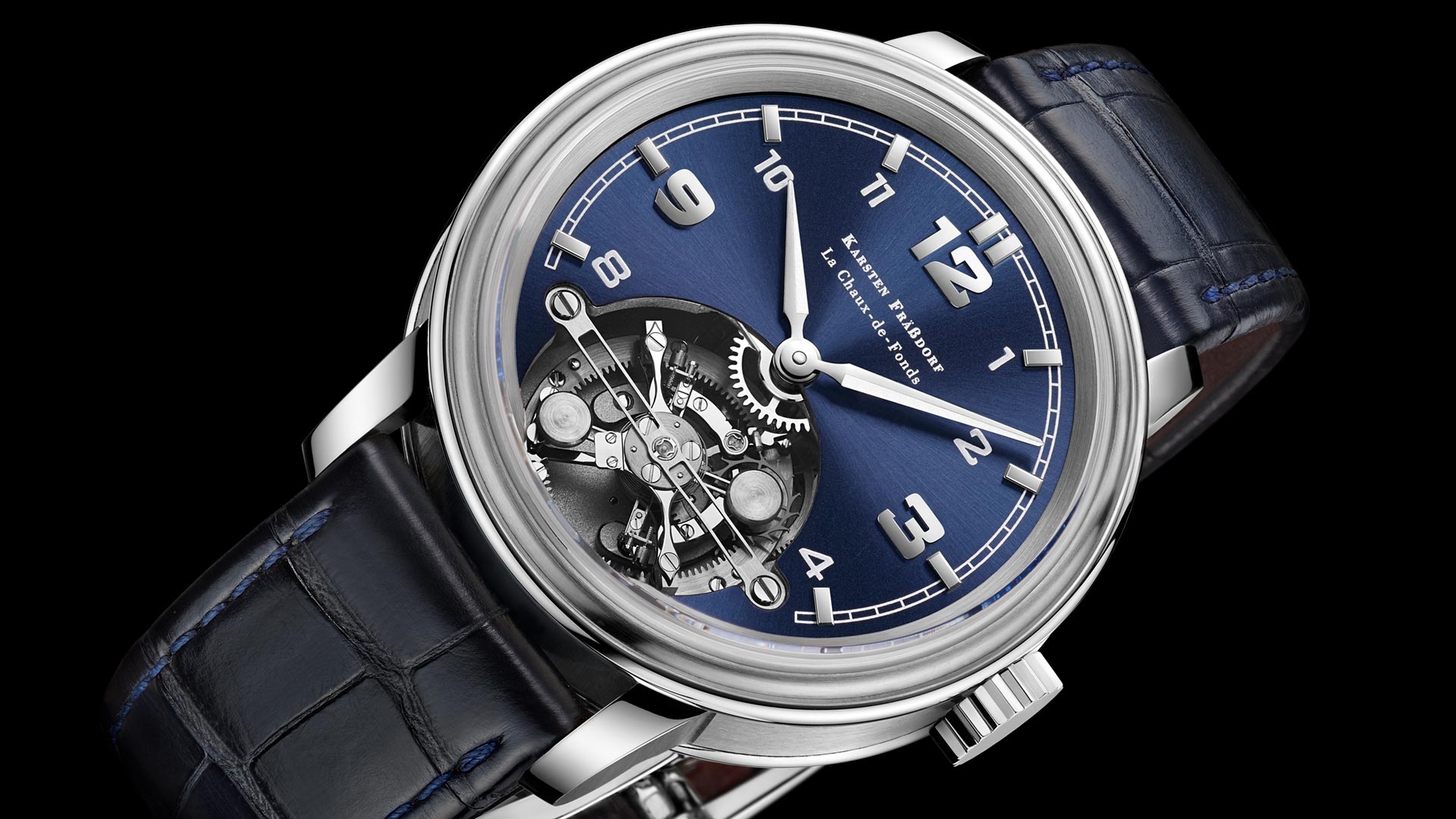
I could not find exact measurements of the tourbillon’s aperture, but it occupies significant dial real estate. It operates at 2.5Hz (that’s 18,000 vibrations per hour or 5 oscillations per second), and slower frequencies like this are nice to watch and can lead to longer power reserves, but also concerns about accuracy. While the hand-wound KF Caliber 360’s mainspring can hold 70 hours of power reserve, the brand has chosen to use a “Geneva stop work” mechanism to lower its power reserve to only 42 hours so that reduced torque doesn’t adversely affect accuracy as it winds down. With a one-minute tourbillon, the Swiss anchor escapement is slightly unusual because the balance uses two axes instead of a wheel, as you may have already noticed. One axis has weights (64gr/mm2 inertia), and the other has sets of screws for regulation and “classification.”
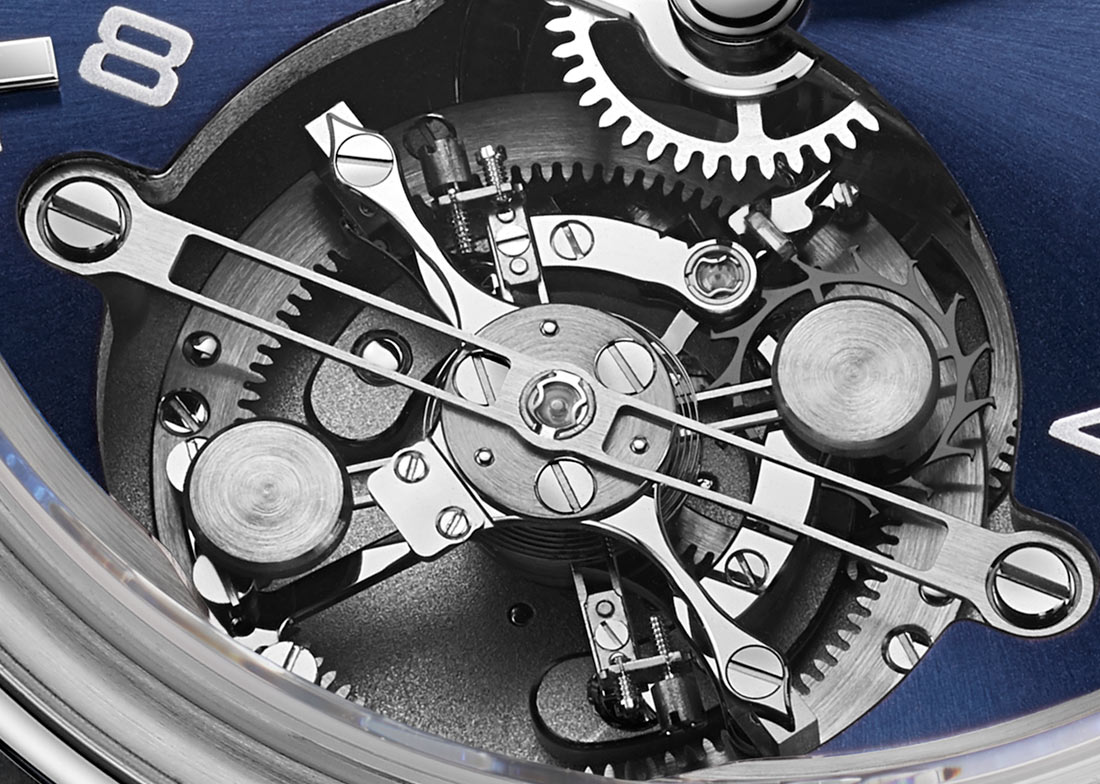
Karsten Fraessdorf designed the balance spring himself to feature two terminal curves, one on the inner end of the coil, being a “corrected Grossmann curve,” and at the outer end of the coil is a “Phillips curve.” I’ll admit that the benefits of this are getting toward the limit of my expertise as a non-watchmaker, but the brand tells us that it will “allow optimal breathing of the balance and improve the isochronism of the movement” – I do know that balance springs are notoriously tricky and that even major brands outsource their production to specialists. The balance spring is made from an antimagnetic alloy produced by the Swiss company Straumann and is resistant to magnetic fields up to 1,000 Gauss. The caseback is solid with hand-guilloche decoration, unfortunately not allowing more of the movement to be seen.
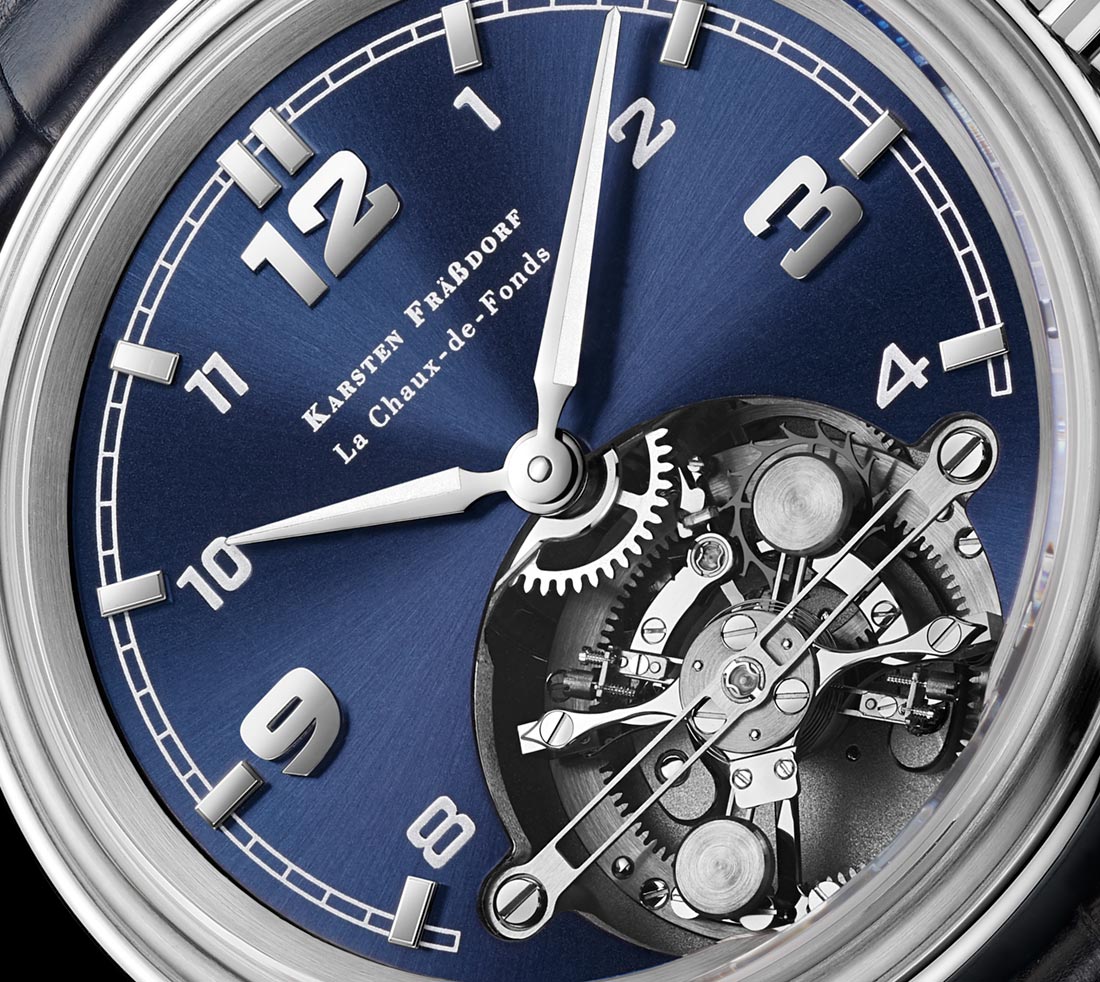
One may simply like the Karsten Fraessdorf Spirograph Tourbillon’s aesthetic, I suppose, or you might be especially drawn to the gargantuan tourbillon. But watches like this probably require a degree of experience to appreciate, and seasoned, educated collectors are surely the target customer. While not priced at the upper end of comparable tourbillon-equipped independent watches, it is still among stiff competition – though “exclusivity,” of course, will be part of the attraction for those who may seek out niche and obscure brands. Again, only 25 pieces will be made, and the Karsten Fraessdorf Spirograph Tourbillon as shown here is priced CHF 85,000. Learn more at montres-kf.com
